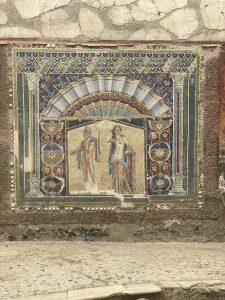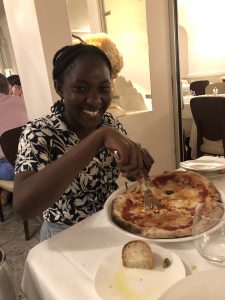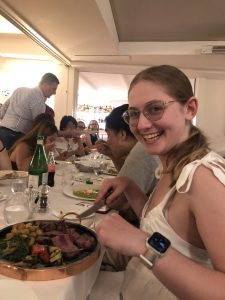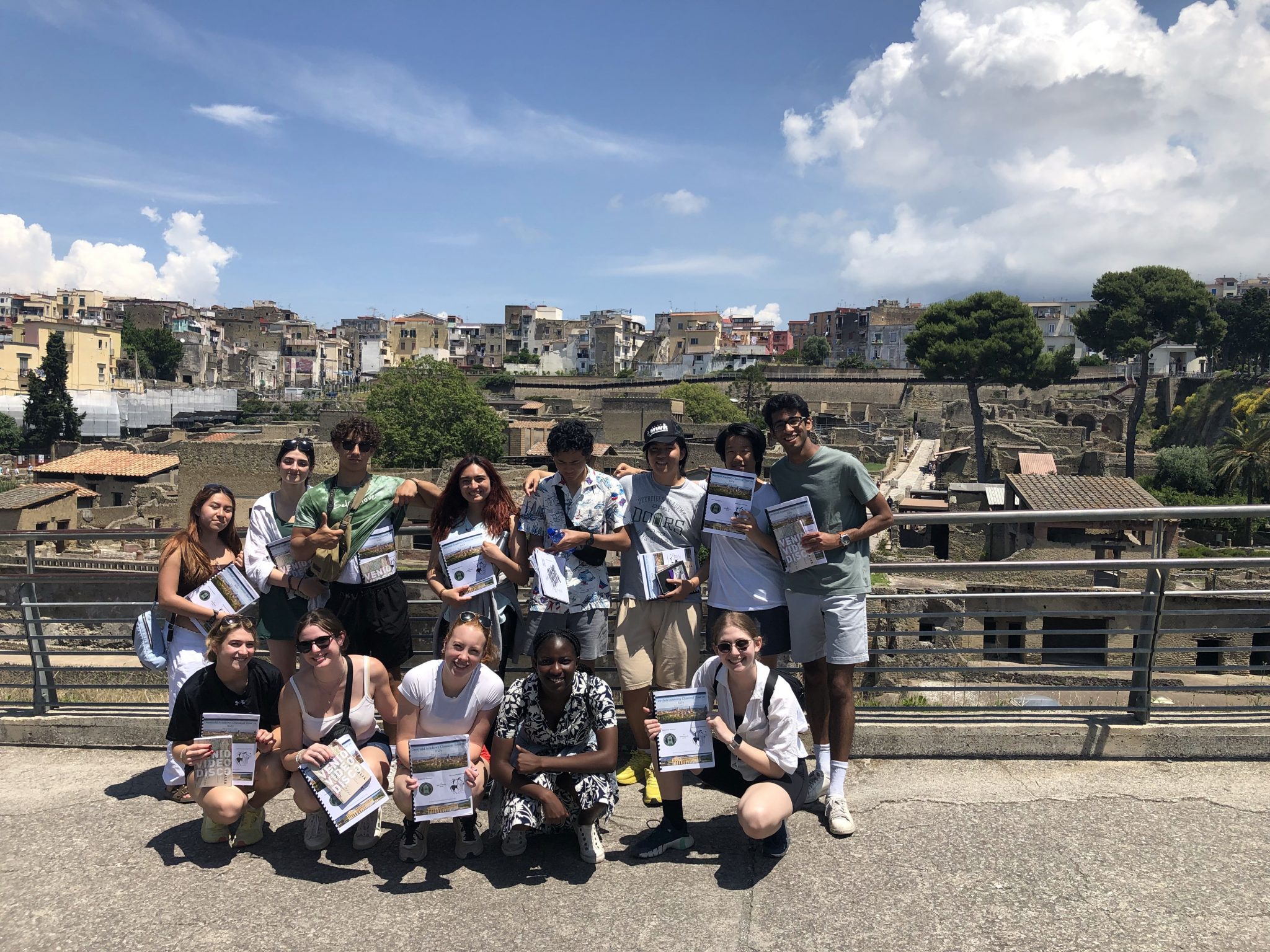Preyas ‘ 24, shares a visit to the National Archaeological Museum in Naples.
I awoke to Jesus Christ on a cross above my pillow with my roommates, Austin and Xavier, still asleep. After getting ready and disposing of leftover pizza from a few nights before, we enjoyed a quick breakfast on the terrace and a stunning view of Mt. Vesuvius across the Bay of Naples. We had woken up early to drive into the bustling city of Naples to visit the National Archaeological Museum. As we entered, we were greeted by three busts of the Greek Emperor Alexander the Great. We walked past them and into the Farnese Collection, initially created by Pope Paul III in 1534 after he began acquiring various ancient Roman statues, largely from the Baths of Caracalla. One figure we took a look at was originally of the Egyptian Goddess Isis, who had a large cult following in ancient Rome, but had been restored as the Roman Goddess Ceres, demonstrating the multiculturalism present in classical Rome. We moved on to another room, where we came face-to-face with statues almost triple our size. We first examined a statue of a resting Hercules, admiring the small details, such as the veins and muscles, the sculptor carefully carved into his work. Afterward, we looked at the largest sculpture recovered from antiquity, the Farnese Bull, depicting the scene of twin brothers Zethus and Amphion tying their stepmother, Dirce, to a bull to punish her. One of the most amazing parts of the statue was the fact it was carved out of one block of marble. Our group admired the way such a dynamic scene was depicted with features like the bull’s legs in the air and a waving cape.
After leaving the Farnese Collection, we visited the “Secret Closet,” a collection of erotic mosaics and statues, mostly found in Pompeii and Herculaneum. Many of the pieces depicted violent and nonconsensual acts, while some depicted images of phalli, which were viewed as a symbol of good luck in Ancient Rome. Our group discussed the nature of separating this collection from the others. One downside brought up was separating prevented most people from seeing and understanding a not highly talked about side of the Classical world.
We visited some more exhibits before leaving for lunch in small groups. Our group ordered some Neopolitan pizza for probably a bit too much. We then hit the road to Cumae, the first ancient Greek colony on mainland Italy and the place where Aeneas received his famous oracle from a sibyl and ventured to the underworld. We walked into the sibyl’s cave and read aloud some Latin in the same place Virgil claimed Aeneas stood before being left to wander and journal for some time.
We then hit the road for three more hours to get to Rome, our final destination for the next seven nights. During our drive, some of us participated in a riff-off, which spiraled into a Hamilton sing-along, much to the dismay of a sleeping Ms. Delwiche. After saying our goodbyes to our tour guide and Sicilian friend Rafaela, we checked into our hotel, a convent where we were greeted by some kind nuns. We dropped our stuff in our rooms and went out for dinner where we met our new tour guide for the next seven days, Livia, who kindly gifted us some goodies from the Paideia Institute. After a filling meal, we went back to our rooms, from where I finish typing up this blog post.





